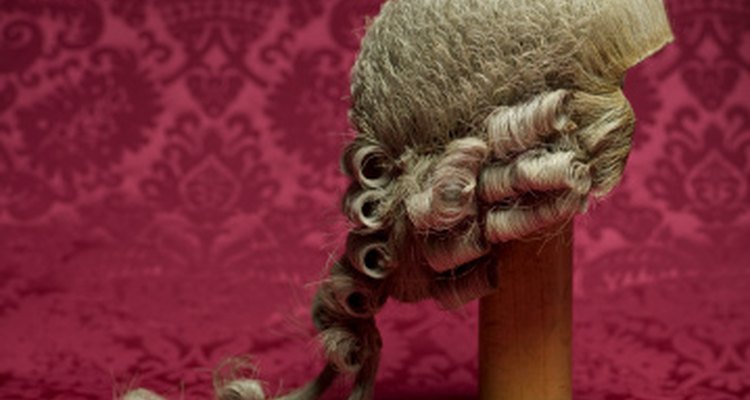
Toward the end of the 17th century in Britain, men starting wearing wigs as a mark of fashion and social status. With various changes, the custom remained in fashion until the end of the 18th century when it fell out of general use. Contrary to popular belief, women did not regularly wear ornamental wigs during this period, though they powdered their natural hair and sometimes augmented elaborate hairstyles with additional hairpieces.
Why Wigs Became Fashionable
The fashion for wigs in Britain derived ultimately from the French Court of Louis XIII. This monarch set the fashion for wigs in the first half of the seventeenth century, when he began wearing one to hide his baldness. Wigs allowed men of any age to affect the luxuriant, flowing locks that were in fashion. In an era of comparatively poor hygiene, a close-cropped head of hair, kept hidden under the wig in public, was easier to keep clean and free of infestation. Wigs were expensive and required regular professional maintenance. Wearing a wig was, thus, a visible sign of wealth and social status. The most expensive and sought-after wigs were made with real human hair. Cheaper wigs were made of horsehair or other animal hair.
Wig Powder
From around 1715, the trend was set for wearing light colored wigs. Experiments in bleaching wigs to achieve the desired look were unsuccessful, so people began powdering their wigs in order to shade them as they wished. The powder was composed of finely ground starch and was perfumed with lavender, orange flower and other scents. Generally, wigs were powdered white, though adventurous souls experimented with colors such as violet, pink or blue. Women also wore the powder on their natural hair.
Changing Fashions in Wigs throughout the 18th Century
At the beginning of the 18th century, wigs were long, full, heavy and ringletted, in a style similar to those seen in portraits of Charles the Second. From the 1720s, men tended to wear shorter, more practical wigs, often braided, tied back or with the ends wrapped in a black taffeta bag. These had previously been worn mainly by soldiers for whom the long, flowing wigs were impractical. The trend for smaller “bob-wigs” made wig wearing affordable and practical for a wider social range, and tradesmen and even apprentices began wearing them. By the 1740s, the full heavy wig was only worn by judges. Throughout the century, wigs got progressively smaller.
The Decline of the Fashion in Wigs
In the 1780s, some fashionable young men began wearing their natural hair lightly powdered. By the 1790s, wigs and hair powder were no longer fashionable, and wigs were only commonly worn by the older generation of men. The hair powder tax of one guinea a year which was enacted by the British government in 1795 effectively brought an end to the wearing of wigs and hair powder in Britain by the close of the century.
Related Articles
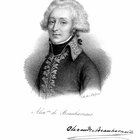
How Were Colonial Wigs Made?

Who Invented Hair Weaves?

What Were Popular Hair Colors in the ...

The History of Hair Dye Colors

What Do Women Pirates Wear?

Fashion for Teen Men of the '90s

Black Hairstyles of the 1800s
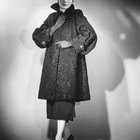
1958 Men's and Women's Dress Styles

Traditional Roles of Men & Women in ...
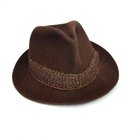
1950s Gangster Clothes
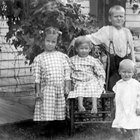
Children's Clothes in 1915
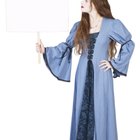
Wedding Gowns in the 1500s

Colonial Wig Making Tools
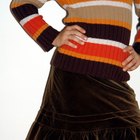
School Clothes in the 1900s

How to Use Peroxide to Fade Out Black ...

Facial Hairstyles in the 1960s
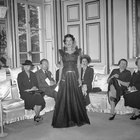
What Type of Clothes Did Women Wear ...
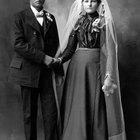
Farmer's Wife's Clothes in the 1800s
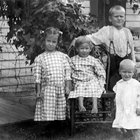
Children's Clothing From the 1920s

Women's Hats in the 1700s
Writer Bio
Sarah Maguire has been writing on education and other topics since 2011. She has a Bachelor of Arts in classics from Bristol University, and a Master of Arts in ancient history and Doctor of Philosophy in classical civilization from Swansea University. Maguire is an expert in Greek and Roman civilization and has taught classes in Greek mythology.
Photo Credits
Siri Stafford/Photodisc/Getty Images